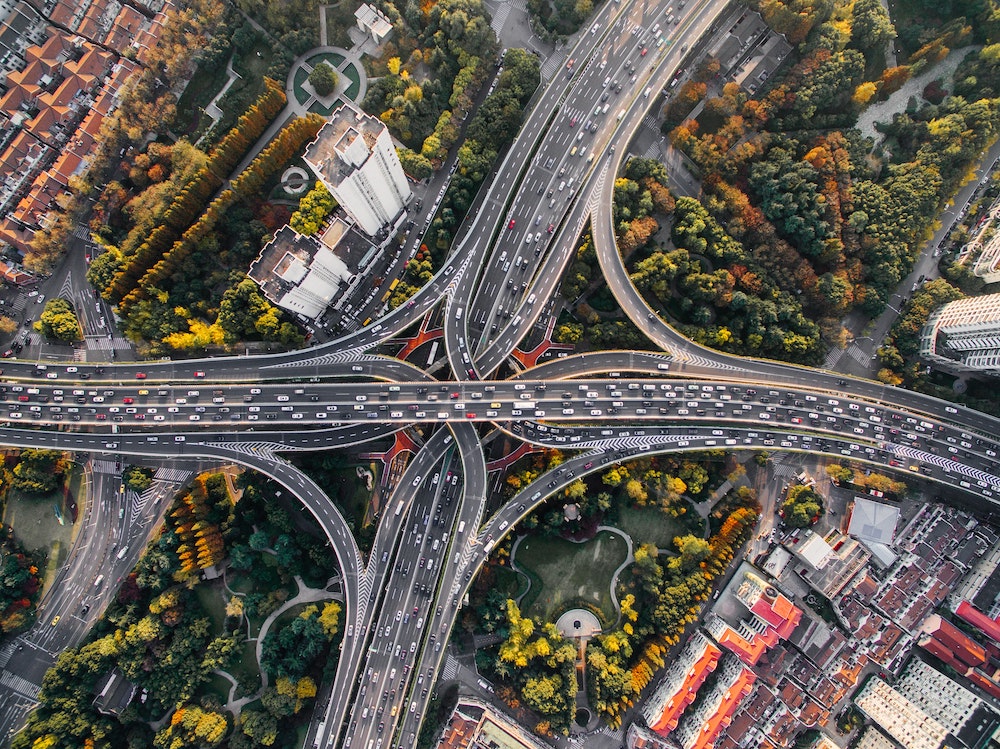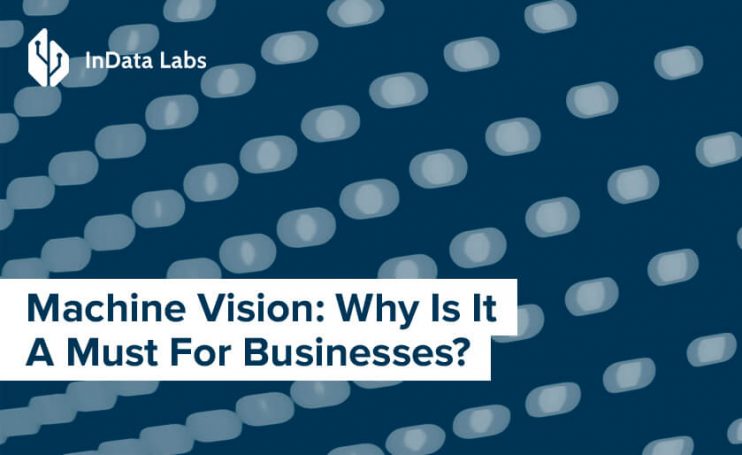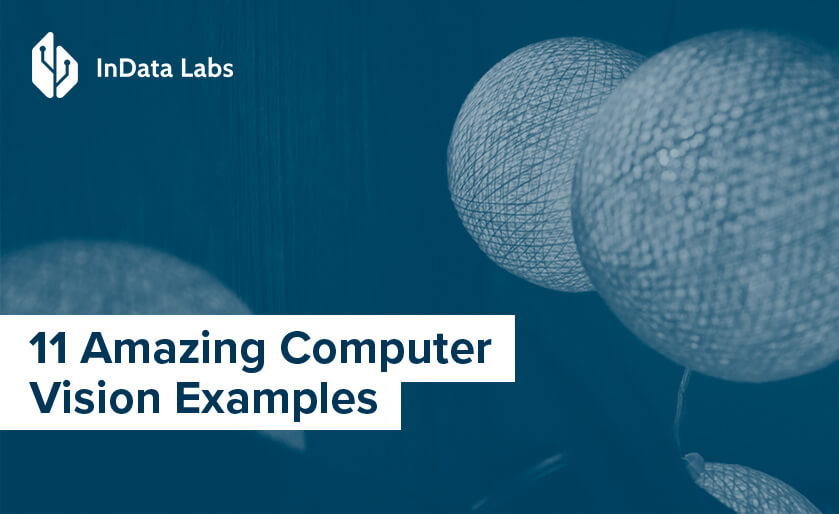The idea of computers having eyes and a human-like brain is old news. And machine vision was the first to bring this sci-fi idea into being.
This engineering discipline leverages evolving tech comforts to automatically inspect and analyze objects under study. AI-based machine vision boasts a myriad of use cases, from barcode reading and pattern matching to defect detection and sorting.
But how exactly can this tech wonder speed up your business growth? And what is machine vision in its nature? Let’s unravel these questions further in the article.
What is Machine Vision in Artificial Intelligence?
Since the advent of AI-powered technologies, machine vision, also known as the inspection system, has been gaining momentum to discover its full potential.
This discipline refers to a scientific branch in artificial intelligence, in particular robotics and related technologies. It is aimed at obtaining images of real-world objects, processing them, and using the gathered data to solve various kinds of applied tasks without (full or partial) human participation.
In layman’s terms, it can be described as the ability of machines to see.
Bloomberg suggests that its global market is projected to hit around $18bn by 2025. Also, Allied Market Research forecasts the global machine vision systems market to increase up to $74 bn by 2027. Therefore, this technology is on the rise today and is expected to keep its stronghold.
Machine Vision vs Computer Vision
A computer vision system and inspection system are often cited interchangeably to reflect a similar concept. Indeed, they both rely on AI, but what is the difference between the two? To solve the machine vision vs computer vision dilemma, let’s get grounded in the basics first.
Computer vision is both a discipline and a set of related technologies. It is a subject of artificial intelligence that deals with how computers can visually sense objective reality and develop a profound understanding from digital images or videos.

Source: Unsplash
The most popular among all computer vision applications is facial recognition systems. You must have come across those image transformation apps that allow you to swap your gender to see what you’d look like if you were male or female. Or you can post a photo from a party on social media, and this technology recognizes a friend on it in a split second and offers you to tag him or her.
Our second candidate follows a different pattern since it is about the application of knowledge and technology. It helps make the production of goods and services more efficient, using the same principles as computer vision.
To make the machine vision vs computer vision comparison more tangible, let’s imagine the former as the body of a system. In this case, computer vision takes the form of the retina, optic nerve, brain, and central nervous system. Thus, a machine vision system uses a camera to view an image, whereas computer vision algorithms transform the media source into machine-readable code.
Therefore, those two tech advancements aren’t mutually exclusive. Instead, they amplify each other’s capabilities and use Artificial Intelligence to address the same problem.
Basic Principles of Machine Vision in AI
In the 1980s-1990s the machine vision systems market began to expand. Back in the early days, inspection systems were in their infancy and successfully recognized only 65-70% of the items. Today, a powerful combination of machine vision software and hardware work together to enable complex systems. Let’s have a look at the typical components of this procedure:
- Sensors or cameras
- Lens
- Lighting systems
- Software and computer to process the images
- Algorithms to identify the patterns
- Physical inputs/outputs as the means of communication

Source: Unsplash
In short, the process of AI-based machine vision goes through the following steps:
- The lens captures the image and transmits it to the sensor as a light projection.
- The system performs automated processing and analysis of the image.
- The system decides what to do with the image next.
- Then, the results are communicated through physical outputs.
Now that we’ve scratched upon the main steps of this process, let’s dwell on how those systems work in more detail.
Machine Vision Systems: Step-by-Step
Here’s a breakdown of how machine vision AI works in the realm of the industrialized flow.
Step 1. It all starts with the lens capturing the image and transmitting it to the sensor as a light projection. To optimize the vision system, the video camera must have a powerful zoom lens. Although there are many types of lenses, machine vision companies typically use lenses with a fixed focal length for ease of control.
Step 2. The camera sensor turns the light into a digital image, which is then transferred to the processor for further analysis.
Step 3. Then, it’s the software tools that come on stage. We use some of them before image analysis (preprocessing), others are used to determine the given properties of the object under study. At the preprocessing stage, effects can be applied to the image to sharpen the edges, increase the contrast or fill in gaps. This is done to improve the capabilities of other software tools, which come into use later.
Step 4. After that, computer vision models analyze the digital images against a defined set of criteria to identify defects, sort products, or complete a variety of other tasks.
Step 5. Finally, the circle is round with an I/O signal or data that is forwarded to a logged device.
As you see, it is quite a straightforward process, yet it performs mundane tasks more quickly and efficiently than humans ever could.
Why Use Machine Vision Software For Business?
Since the 1970s, to a variety of industrial applications today, the machine vision systems market has grown from a theoretical viewpoint to the lifeblood of manufacturing. Machine vision technology allows computers to identify people, places, and objects in images with an accuracy that is comparable to or even greater than human ability.
From a business standpoint, inspection systems, often based on deep learning models, automate the extraction, analysis, classification of useful data contained in a digital image or series of images.

Source: Unsplash
Nowadays, any business producing items to a particular standard avail of vision capabilities as part of its manufacturing process.
In particular, the differentiators of machine vision software include:
- Optimized quality through a thorough inspection of the products
- Minimized production waste is achieved by identifying errors early in the process
- Maximized throughput thanks to identifying inefficiencies in the process. It also enables organizations to reach their full performance potential.
- Minimized part damage that is ensured by removing physical contact between a test system and the parts being tested.
- Supreme safety is done by eliminating the human factor during a manufacturing process.
Now let’s go over from mere rhetoric to how machine vision ai is implemented in various industries.
Machine Vision AI: Popular Use Cases
Although the machine vision process is most often associated with manufacturing, the reach of this approach has transgressed industrial applications. Today, this technology spans a gamut of fields through to our daily lives. Below, we’re sharing some of the most common vision trends in various industries.
Manufacturing
As we’ve mentioned, manufacturing is the major task generator for inspection systems. Hence, this field incorporates the largest number of applications and makes the largest contribution to inspection systems.
The complexity of machine vision AI varies from Industry 4.0 to a small sawmill with input wood volume control.
Below, you’ll find the most popular applications of vision system cameras:
- Production lines (barcode scanning, quality inspection)
- Robotics (vision-guided robots)
- 3D scanning (three-dimensional inspection and measurement of complex 3D free formed surfaces)
- Logistics (including track trace)
- Product yield inspection (automated quality control)
- Barcode scanning (Sorting, measuring, identifying, and delivering items).
Traffic Management
Currently, traffic engineers can benefit from the innovations to optimize and enhance traffic management. In particular, it is applied to the following areas:
- Traffic monitoring,
- ITS projects,
- Infrastructure condition monitoring (asphalt, railroad, overhead contact line scanning).

Source: Unsplash
Thanks to the reliability of hardware, engineers can successfully execute these tasks seamlessly and round the clock.
Entertainment and Film Industry
This AI-enabled technology has also been revamping the visual media and entertainment sectors. VR/AR content volumetric capture augmented reality vision, and much more own its inception to machine vision cameras.
The latter can synchronize with each other and seeing not only in color but also in the infrared range.
Science
A growing number of science centers, universities, SCBs, and schools use the visual concept for scientific and educational purposes. The market is inundated with cameras with various characteristics and resolutions.
Thus, such cameras enable scientists to target the following problems:
- High-speed cameras
- High-resolution cameras
- Water and temperature resistant cameras
- Monochrome cameras with 12-bit color depth (usually 8-Bit up to 256 color gradations)
- High spectrum sensitivity, etc.
Sports
Among others, machine vision companies also supply AI equipment to enable sports performance analysis. Photo-finish systems, track, and trace systems have found broad implementation in the sporting field.

Source: Unsplash
Thus, in 2017 Wimbledon partnered up with IBM to seize the data surrounding performance to drive improvement.
Final Word
We have stepped into a wonderful era of tech breakthroughs. An era when computers can mimic the human language and machines have gained the ability to identify and recognize a variety of objects. Vision technologies, in particular, have fast-forwarded the AI revolution and redefined daily business processes.
Today, vision technology spans lots of industries and fields, including manufacturing, science, logistics, and others. Global businesses can leverage tech advancement to reduce defects, drive down costs, and improve on-site safety.
Author Bio:
Tatsiana Isakova is a content writer who authors in-depth industry insights and is avid about Artificial Intelligence and Big Data.
Let’s Build Machine Vision Solutions Together
Having an idea for a machine vision-based project? Contact our team to arrange a consultation.



